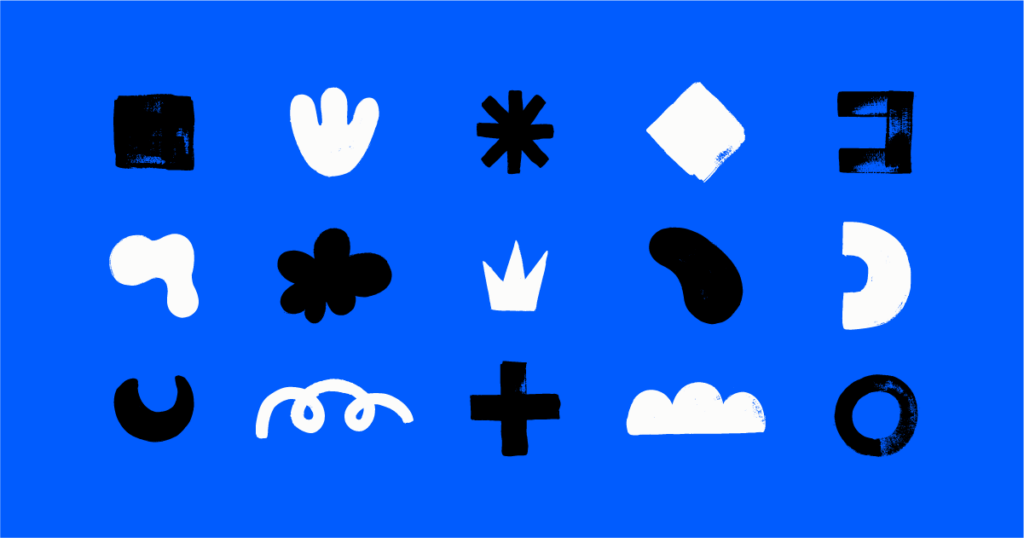Scaling your creative asset library to support hypergrowth
We’ve already discussed why scalable design is the key to sustained growth for SaaS businesses. However, design at scale isn’t as straightforward as just churning out more collateral. Businesses that experience hypergrowth (i.e. achieve a sustained 40%+ growth rate annually) don’t tend to get there by moving in a straight line, but instead through strategic expansion. Expanding product offerings, expanding target audiences, expanding geographic markets. All of these growth tactics require their own specific collection of creative assets. When you get down to the nitty gritty of what this actually involves, it’s really no wonder that 90% of in-house creative teams are struggling with increased workloads.
Assets, assets, assets
SaaS businesses that have successfully scaled to $100 million ARR and beyond are producing hundreds of assets every month. So what exactly does a creative asset library look like for these types of companies? Let’s break it down…
Baseline collateral
These are all of the assets that creative teams would typically produce at a basic level. Targeting is often general or broad, with a strong focus on brand.
- Sales Decks/Brochures (Web & Print)
- Investor Decks/Brochures (Web & Print)
- Partner Decks/Brochures (Web & Print)
- Use Cases
- Solution Briefs
- Web Pages
- Landing Pages
- Case Studies
- Customer Stories
- Ebooks/Guides
- Reports
- Explainer Videos
- Individual Feature Videos
- Partner Explainer Videos
- Blog graphics
- Social Media Graphics (paid and organic)
- Event creative/signage/SWAG
- Sales kick offs
- Partner kick offs
- Email templates
Creative collateral to support growth
In addition to this, scaling businesses also need to have a robust catalog of creative assets to support their marketing growth strategy – whatever that may be. Let’s take a closer look at some of the most common SaaS growth marketing strategies (and the creative assets that support them).
Product-Led Marketing
Product-led marketing is all about leveraging the product itself to attract, convert, and retain customers. This approach is hugely effective; product-led growth companies have 60% more ARPU (Average Revenue Per User) than non-PLG companies. What’s more is that 83% of public SaaS companies that achieve $100m ARR in their first five years use product-led models. Therefore if a businesses is leading with product, they need collateral that will entice and convert audiences, and ultimately turn them into advocates.
Examples of PLM Assets:
- A/B test campaign assets
- Product videos
- Feature videos
- Collateral promoting free trials
- Product comparison graphs
- Social media campaign graphics
- Email templates
- Customer surveys
Account Based Marketing
Account Based Marketing (ABM) pinpoints key accounts and tailors personalized, focused campaigns to engage each one specifically. So we’re not talking about run of the mill collateral here, but rather hyper-relevant, customized, prescriptive creative assets. While this might seem like a lot of work (and don’t get us wrong….it is!), it’s often a worthwhile investment – 70% of businesses see a noticeable improvement in brand awareness and knowledge after implementing an ABM strategy.
Examples of ABM Assets:
- Branded landing pages
- Brochures with personalized messaging
- Branded social media campaign graphics
- Personalized case studies/use cases
- Bespoke features/partners/integrations collateral
- Personalized presentation decks
Vertical-Centric Marketing
Vertical-centric marketing caters to specific industries or market verticals. Unlike horizontal marketing, which targets diverse customer bases (and is typically satisfied with general collateral), vertical-centric marketing focuses on features and functionalities that are customized for particular industries. This strategy is on the rise – market capitalization of the vertical SaaS industry has increased from $50 billion in 2010 to more than $600 billion in 2020.
Examples of vertical-centric marketing assets:
- Vertical-focused category web pages
- Campaign landing pages
- Industry-specific case studies/use cases
- Industry focused solution briefs
- Vertical focused social media campaign graphics
- Vertical focused demo videos
- Vertical focused reports
International Growth Marketing
The most successful SaaS businesses generate over 40% of their global revenue from Europe by the time they go public, which equates to approximately $80m ARR for a typical company. While expanding into new markets presents a massive opportunity for scaling businesses, it also requires a massive amount of supporting collateral in order to be executed effectively.
Examples of assets for international expansion:
All of the creative assets listed above (e.g. sales decks, case studies, video demos, etc), customized for:
- Multiple languages
- Cultural nuances
- Localized pricing
The challenges of managing collateral at scale
Since businesses often employ several of these marketing strategies simultaneously, it’s easy to see how cumbersome a creative asset library can become as a business grows exponentially.
And there lies the biggest challenge. Conceptualizing design might not be an issue, but implementation can throw many complexities into the equation. For starters, there’s the matter of actually creating hundreds of assets, particularly if your in-house team is already stretched. But then, there’s also this to consider –
Asset Management
Creative assets not only have to be stored safely to protect them from unauthorized use, they also have to be regularly maintained and optimized when needed. This includes versioning collateral as needed to ensure that they are always up to date and relevant. Assets should also be optimized in terms of size, format, and quality for various platforms and purposes.
Asset Organization
When you’re dealing with thousands of creative assets, organization is non-negotiable. Assigning categories, naming conventions, and tags needs to be part of the creation process, and all assets should be linked to appropriate projects, types, themes, clients, etc.
Asset Workflows
If businesses are using a combination of in-house designers, freelancers, and agencies to produce creative assets, implementing production workflows can be a nightmare. This includes average production times, brief templates, review processes, and testing/staging procedures. Without an effective creative framework, design at scale can get real messy, real quick.
Scaling creativity to support hypergrowth
The most successful SaaS businesses don’t just multiply creative assets as they scale. They develop a cohesive suite of content, where each individual asset serves a very specific purpose. How do we know this? Because we help them do it! At Perpetual we have developed SmarterCreative, a three-phase creative model that supports reliably fast, quality-centric creative to support those companies who are experiencing HyperGrowth.
Interested in finding out more? Book a call with the team today!



